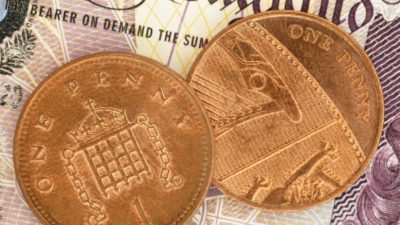The recent interest rate cut has thrust high-yield shares into the limelight once more. Now that savings rates are poor, bond yields are at historic lows and house prices are falling, income-seeking investors seem to have little option but to consider high-yielding shares. However, considering whether a dividend is sustainable and has growth potential is just as important (if not more so) than a high headline yield.
Stability play
One company that delivers on all of these areas is National Grid (LSE: NG). Despite a share price rise of 17% since the start of the year, National Grid still yields 4%. Furthermore, its business model is among the most stable in the FTSE 100, with its outlook being relatively certain and its financial standing sound given the consistency the company offers. Its beta of 0.5 indicates that it will offer less volatility than the wider index over the short run, which means a more consistent total return for its investors.
National Grid’s dividends are covered 1.4 times by profit. This shows that they have the potential to grow by at least as much as earnings over the medium term. In addition, its aim of increasing dividends by at least as much as inflation is likely to be fulfilled given its current level of headroom when making shareholder payouts.
Riskier but more rewarding
Also among the high-yielders of the FTSE 100 is Marks & Spencer (LSE: MKS). It yields 6.1%, but this doesn’t paint the full picture. That’s because Marks & Spencer is expected to report a fall in earnings of 13% this year, followed by a fall of 2% next year. This is largely because of the challenging outlook for the UK retail sector, with Brexit likely to have a negative impact on consumption due in part to higher unemployment.
In response, Marks & Spencer is expected to cut dividends next year by 2.1%. This is disappointing but would still leave the company yielding 5.9%. As such, Marks & Spencer is a worthy income buy, but is riskier than National Grid when it comes to the sustainability of dividends. On the flip side, its yield is 50% higher than National Grid’s, which means that on a risk/reward ratio Marks & Spencer has considerable appeal for income-seeking investors.
Worth a look?
Meanwhile, Legal & General’s (LSE: LGEN) 6.7% yield offers a stunning income return for investors. Furthermore, the company has a bright outlook and its dividends are well covered by profit. For example, Legal & General is expected to increase its bottom line by 11% this year and by 4% next year as its current strategy has a positive impact on its business performance. This is set to leave its dividend covered 1.4 times by profit in the current year, which indicates that shareholder payouts are very affordable and could rise by at least as much as profit over the long run.
Clearly, Legal & General’s financial performance isn’t as stable as National Grid. However, its high yield makes up for this and it means that both stocks (as well as Marks & Spencer) are excellent buys for income investors, with their yields not being too good to be true.






